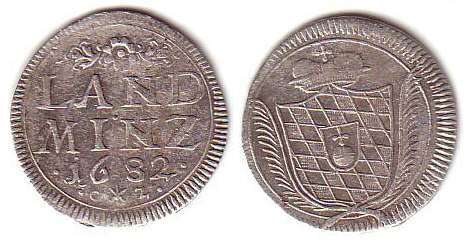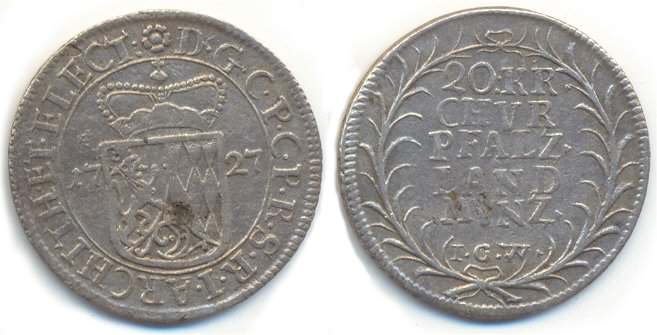Landmünze
From Marteau

1 Landminz, Bavaria, 1682 = 2½ Kreutzer = 10 Pfennige.
History
German, also "Landmüntze" (regular north German spelling) or "Landminz" (to be read on south German coins). Coin of 2 to 20 Kreutzer (the "einfache Landmüntze" of 2½ Kreutzer or 10 Pfennige was the lowest regular unit around 1700) issued by a territorial state ("land") with a metal value bellow the nominal value the "Reichsmünzfuß" would have demanded. Landmünzen had to be accepted for their nominal value in the territories issuing the respective coins. The minting of Landmünzen had partly answered the problems caused by the "Kipper- and Wipper"-period (1618-23) when Germany's coinage suffered the greatest deterioration – "Landmünzen" no longer promised the value they proclaimed, clipping was hence no longer profitable, they received their value on the other hand from the territory issuing them and demanding a certain trust in the currency. The urban equivalent was called "Stadtgeld" or "Stadtmüntzen". The minting of Landmünzen ended in the 19th century.

20 Kreutzer Landmünze, Chur-Pfaltz, 1727
Subpage of the Marteau Platform of Research in Economic History
